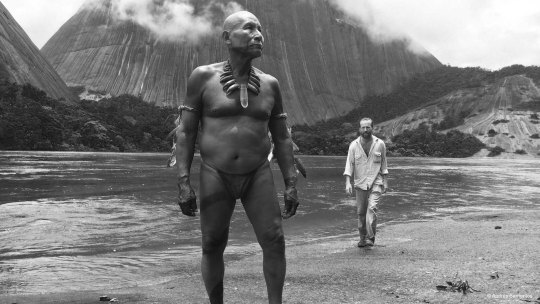
NYRB on the film:
“The plot is based loosely on the stories of two scholars who traveled to
the Amazon decades apart. The German anthropologist Theodor
Koch-Grünberg (1872-1924) made several expeditions in the early
twentieth century, and shot documentary footage that appears to have
inspired Guerra’s sets and costume design. The Harvard biologist Richard
Evan Schultes (1915-2001) lived in the South American rainforests in
the 1940s and 1950s, becoming an expert on hallucinogenic plants and
natural rubber. Guerra unites the two men through Karamakate, a shaman
who is the last surviving member of a tribe destroyed by rapacious
Colombian rubber plantation barons. In the Koch-Grünberg scenes, set in
1909, a skeptical young Karamakate (played by Nilbio Torres, a hunter
who lives on the Vaupés River) agrees to help the feverishly ill
anthropologist find the fictional Yakruna flower, the only known cure
for his disease. (Koch-Grünberg did, in fact, die on one of his
expeditions, but of malaria, in 1924.) In the Schultes scenes, set three
decades later, the biologist begs the now hermetic, senile Karamakate
(Antonio Bolivar, one of the last fifty remaining members of the Ocaína
tribe) to help him find the elusive Yakruna for an equally selfish, but
more cynical, reason. Guerra alternates between the two stories
reluctantly, allowing each to expand and respire. The film’s pace is
never slow but patient, lingering, accretionary, dilating with the logic
of a nightmare.“